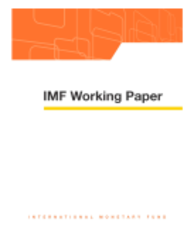
Holding International Reserves in an Era of High Capital Mobility
Why do countries hold so much international reserves? Global reserve holdings (excluding gold) were equivalent to 17 weeks of imports at the end of 1999. That is almost double what they were at the end of 1960 and about 20 percent higher than they were at the start of the 1990s. In this paper we study countries' reserve holdings in light of both the increased financial volatility experienced in the last decade and diminished adherence to fixed exchange rates. We find that buffer-stock reserve models work about as well in the modern floating-rate period as they did during the Bretton Woods regime. During both periods, however, the models' fundamentals explain only a small portion (10-15 percent) of reserves volatility.
Publication date: April 2002
ISBN: 9781451848298
$15.00
Add to Cart by clicking price of the language and format you'd like to purchase
Available Languages and Formats
| English |
Prices in red indicate formats that are not yet available but are forthcoming.
Topics covered in this book
This title contains information about the following subjects.
Click on a subject if you would like to see other titles with the same subjects.
International - Economics , International - Economics , capital mobility , reserve holdings , equation , skewness , central bank , statistics
Also of interest
Summary
Copyright © 2010 - 2025
Powered by:
AIDC



